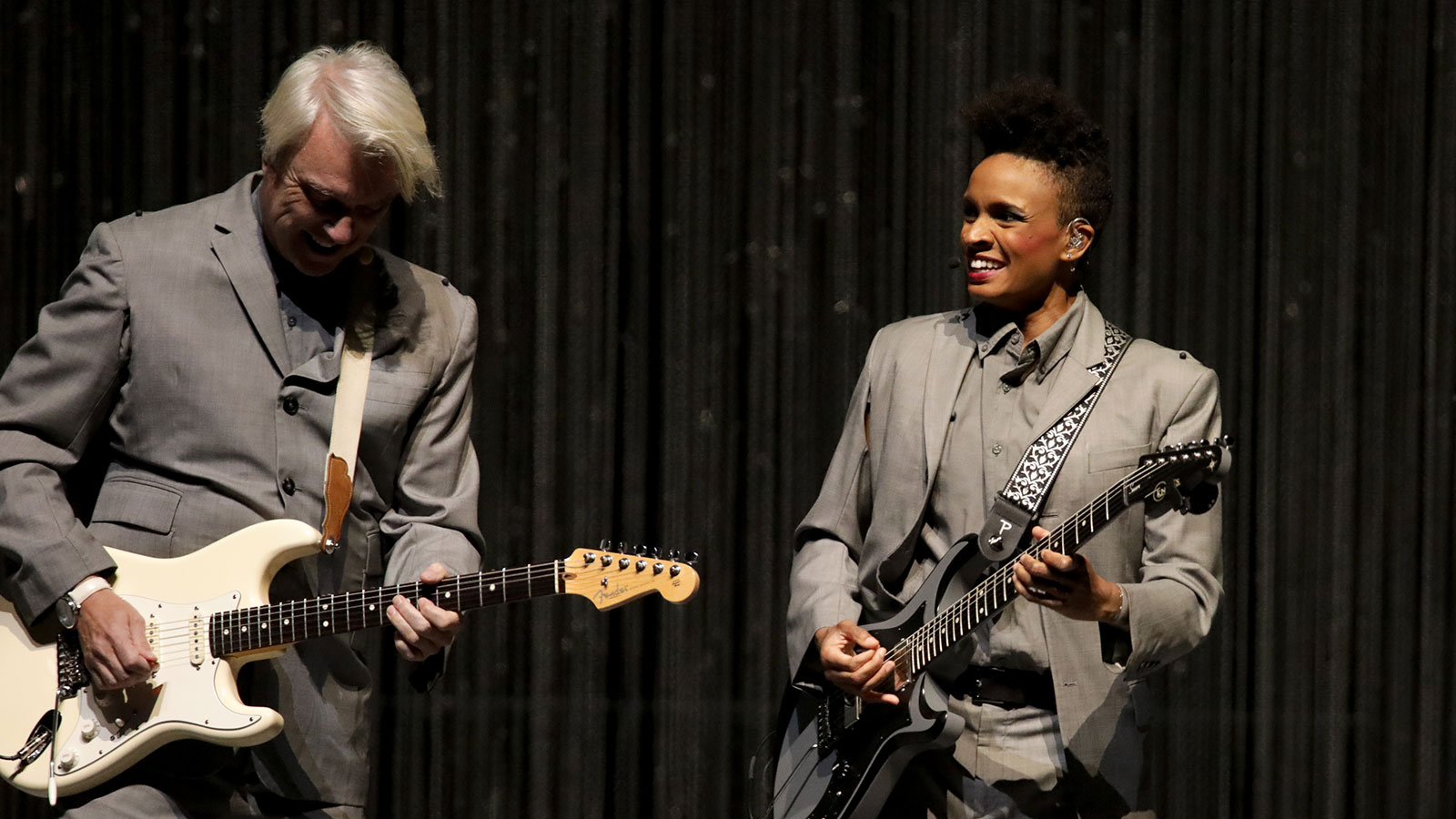Angie Swan takes us behind the scenes of David Byrne’s American Utopia and reveals how it changed the way she plays guitar
The guitar is important, says Swan, but don't forget your body is an instrument as well – and that team players get all the best gigs

David Byrne’s hugely successful, 26-country American Utopia world tour broke a lot of rules on the way to earning a Broadway residency and ultimately a Spike Lee-directed film. For starters, the stage was entirely clean despite being a fully live performance.
Plus, half of the 12-piece band were drummers playing marching-band style, each covering a different part of the rhythm. But guitarist Angie Swan had her own hurdles to clear during the show’s four-year run, which reached its finale in April.
The highly choreographed performances of songs from throughout Byrne’s career, including the Talking Heads classic Burning Down the House, required a recalibration of how she played her instrument.
“I’ve learned to practice the way I’m going to perform,” Swan says. “Standing up and playing feels different than sitting down, and in most gig settings you’re going to be standing up anyway, so you might as well practice that way.
“And being able to move around and treat your whole body as a metronome – your guitar is your instrument, but at the same time, your body is the instrument, as well.”
Removing guitar amps and pedalboards from the stage also led to marked changes in the way Swan, who previously played with CeeLo Green and others, performed the 22-song set.
Instead of having her 1964 Fender Twin onstage, she only heard it in modeled form via a Kemper Profiler that came through her in-ear monitors. She relied on her tech to switch her amp and effects settings.
All the latest guitar news, interviews, lessons, reviews, deals and more, direct to your inbox!
We consider the techs as additional band members because, for me, he’s literally acting as my feet
“There are 12 of us on stage, and we consider the techs as additional band members because, for me, he’s literally acting as my feet,” she says.
Swan, who plans to release her own album this summer, grew up in a guitar-loving household in Milwaukee, with Robert Cray and Stevie Ray Vaughan in rotation and Joe Satriani’s Surfing with the Alien accompanying the Swan family on road trips.
She was mesmerized watching players like Jennifer Batten perform with Michael Jackson on MTV. But while she has the chops to shred, she takes a team-player approach to her gigs.
“It’s really important to me to be able to lock in with everybody and not overplay. If you get a chance to break away from that and solo, then you take that chance,” she says. “I’ve learned over time that less is more in playing settings, and that’s helped me get gigs and keep gigs.”
Jim Beaugez has written about music for Rolling Stone, Smithsonian, Guitar World, Guitar Player and many other publications. He created My Life in Five Riffs, a multimedia documentary series for Guitar Player that traces contemporary artists back to their sources of inspiration, and previously spent a decade in the musical instruments industry.

